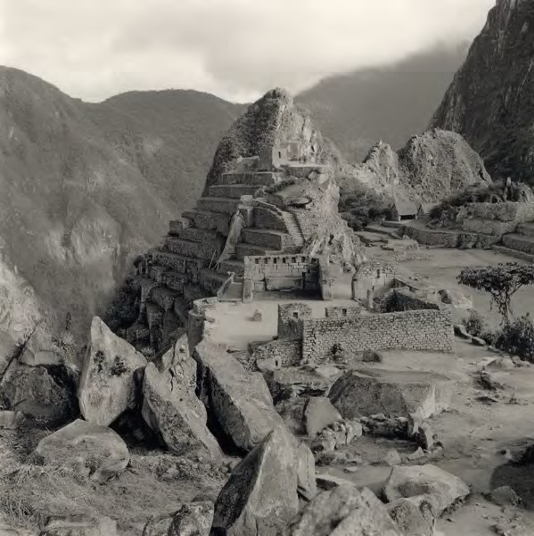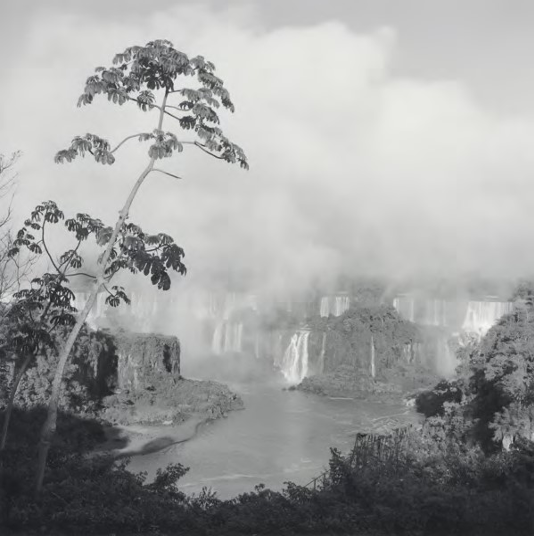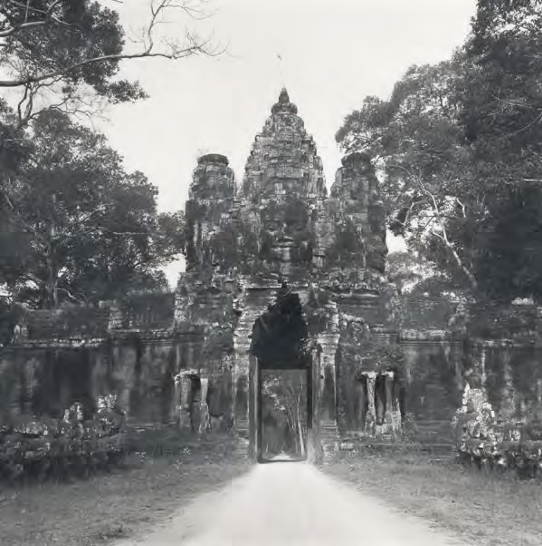A T Mann
www.atmann.net & atmann@atmann.net
Long before humanity arose, there were sacred landscapes—places where the natural world compels us to contemplate great myths and mysteries of origin and open our senses to experience the transcendent. To behold a sacred mountain, cave, waterfall, magnificent tree, river gorge, or other physical manifestation of the eternal is to symbolically cross a threshold from our mundane, time-bound reality into something beyond our limited lives and intellects. Natural sacred landscapes are at the core of our need for the temples and other architecture we have built over the millennia that reflect our never-ending quest to nurture our spirit and gain access to the divine.
The sacred is an ethereal quality rooted in our soul and spiritual life. These spiritual qualities are dynamic aspects of the human psyche that are independent of forms but which find expression through the world of form. Sacred landscapes trigger spiritual recognition in us, whether we are inclined or not. Aborigines describe the earth’s sacred power as the “Dreaming” of a place, because anything that occurs in a particular location “leaves seeds, myths, or images, unseen vibrations that provoked the place into being in the first place.” Myths and dreams awaken our psyche and resonate with places deeper than mind that live within us. Aboriginal art maps the territory, which is an interaction between the spiritual and the physical place. If we are awake, present, open, and engaged, we can learn to recognize and work with these energies and their resultant information. Everything in our world is alive with sacred symbolism, imbued with spirit, and pregnant with possibility, if only we can be aware of it.

Machu Picchu
Sacred landscapes are created by the play of nature over millions of years and they evoke in us pure original states and wonder at the dynamics of earth and sky. Such places are often wild and chaotic, or dramatic beyond words; they reveal their history in profound ways that we feel, yet don’t understand on a conscious level. Experiencing the sacred is being present to primordial realities that occur at the beginning of time and continue to repeat ad infinitum. Such places evoke pure creation, just as creation myths, stories, and religions attempt to graft the origins of early humanity into such powerful places. There is a vocabulary of symbols that originated in the natural world and over time migrated into our abstract, symbolic realities, and then became architecture.
A primary symbol in all religions is the sacred mountain, which ascends from its broad base in the physical world up to its apex in the dome of heaven. Not surprisingly, Moses communes with Yahweh there, and mounts Olympus and Asgård are where Greek and Scandinavian deities live. Machu Picchu is atop the sacred mountain, indeed is the sacred mountain, and the four sacred mountains in Tibetan Buddhism and Native American cultures share similar colors and cardinal directions. Mountain symbolizes ascent, aspiration, and are simultaneously ways for deities to come down to earth, and also for human aspirants to ascend to heaven.
As mountains primarily symbolize masculine quests for power and knowledge, so the earliest Paleolithic sacred caves were wombs contained within the earth, places of generation, totemic places of hunting magic, and feminine places of birthing like that of Zeus in the Dikteon cave in Crete, of oracular wisdom at Delphi, dark sites of initiation and rebirth, and entrances to the underworld of the unconscious. Aboriginal women went into Ayer’s Rock caves to rub against the stones and “dream” their children into being, and the solstices were celebrated in Newgrange’s inner “caves” in Ireland, where sun and moon joined, and caves, not accidentally, were where Plato saw reflections of the archetypes.
Mountains and caves go together, and early monuments were almost always built amidst sacred landscapes, like the pyramids at the apex of the Nile delta echoing its form, where the Great Pyramid is a sacred mountain, containing passageways that are caves. Monasteries in the Himalayas, and circular temples at Delphi open to the heavenly dome, mark and identify the sacred place, focus the spiritual energy, and replicate the forms of the landscapes themselves. It is as though they were there to capture the unique energies of place, constrain it, and capture it through their forms. Over time, mountains morph into pyramids, temples, stupas, and even pitched roofs as their message remains the same.

Iguazu Falls, Brazil
Thresholds are boundaries, just as consciousness is a psychic boundary that ostensibly isolates and protects our fragile being from the chaos and unpredictability of the teeming and ungovernable unconscious. And yet all such thresholds contain gateways that allow us entrance, and potentially, integration between levels of being. Sacred landscapes are passageways that facilitate access to higher realms. The Maya and Scandinavians, among others, believed that a world tree penetrated through all the worlds, from bottom to top, so the world tree is a path by which one traverses between these realms. For the Maya the jaguar protected these entrances and indeed the entrance gateways often took the form of jaws. Thus trees become columns, and arches gateways, inviting entrance to the divine.

Angkor Wat Gateway
Whether it is a mountain or grove of trees, a magnificent flowing waterfall, or a volcanic lava flow frozen in time, a pyramid in the jungle or stupa in the desert, once we cross such gateways into sacred territory, we open ourselves up to pure spirit. These are places where the gods descend to earth, where the goddesses emerge, and where we realize that heaven is here on earth. Although many argue that such beliefs in gods and goddesses are archaic, we all carry a cellular memory of these earliest developments in the deeper and more formative recesses of our minds and spirits, triggered by the presence of such sacred landscapes.
When we experience sacred landscapes, whose symbols speak their potency as elements derived from nature, we learn to utilize them as potent triggers in architecture, siting, landscaping, and organizing the visual world. We must renew our reverence of this marvelous and mysterious planet and its wonders, which will also encourage us and others to save and protect our most valuable resource.
All photographs © 2010 Lynn Davis Photography



